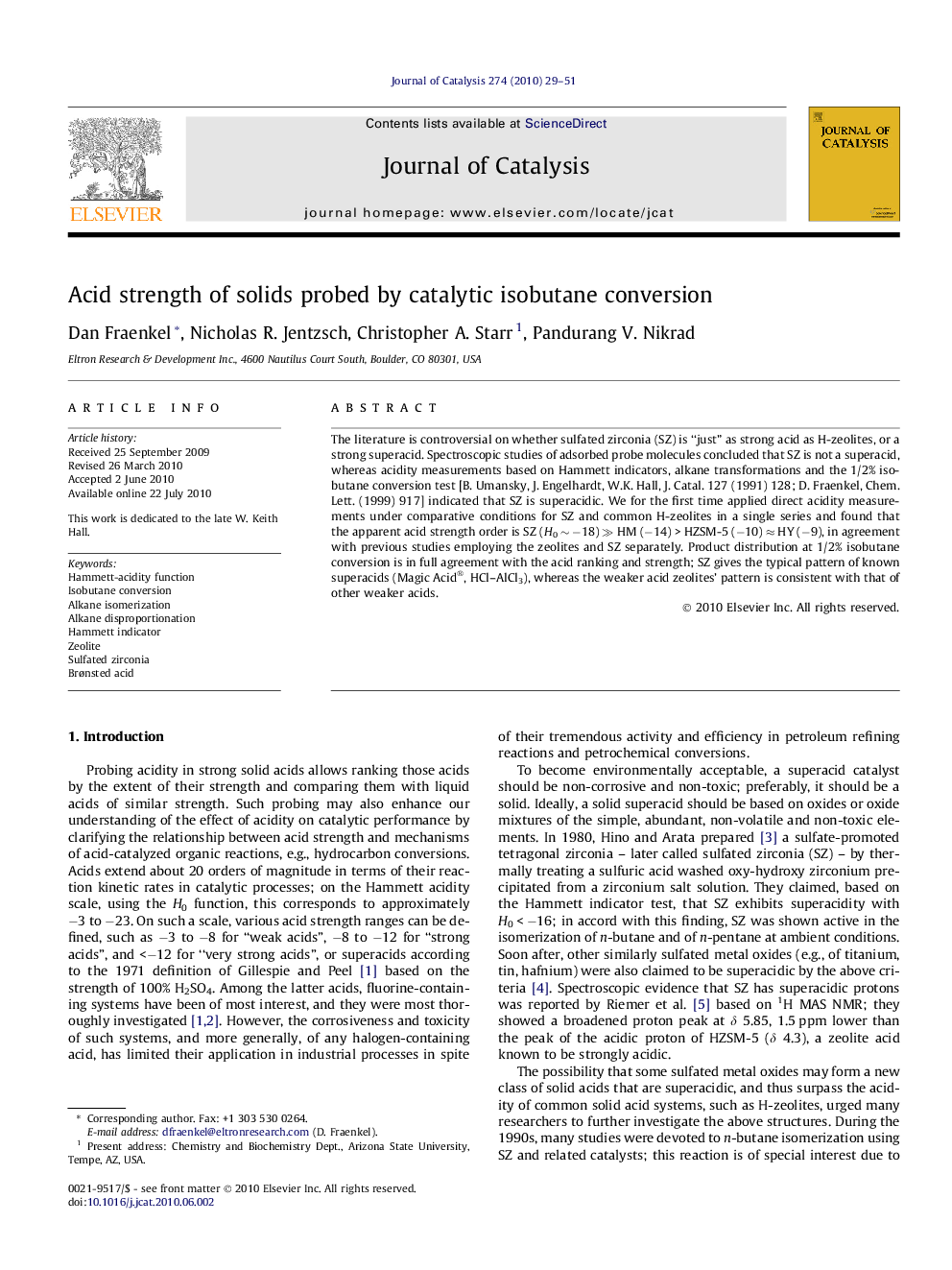| Article ID | Journal | Published Year | Pages | File Type |
|---|---|---|---|---|
| 61950 | Journal of Catalysis | 2010 | 23 Pages |
The literature is controversial on whether sulfated zirconia (SZ) is “just” as strong acid as H-zeolites, or a strong superacid. Spectroscopic studies of adsorbed probe molecules concluded that SZ is not a superacid, whereas acidity measurements based on Hammett indicators, alkane transformations and the 1/2% isobutane conversion test [B. Umansky, J. Engelhardt, W.K. Hall, J. Catal. 127 (1991) 128; D. Fraenkel, Chem. Lett. (1999) 917] indicated that SZ is superacidic. We for the first time applied direct acidity measurements under comparative conditions for SZ and common H-zeolites in a single series and found that the apparent acid strength order is SZ (H0 ∼ −18) ≫ HM (−14) > HZSM-5 (−10) ≈ HY (−9), in agreement with previous studies employing the zeolites and SZ separately. Product distribution at 1/2% isobutane conversion is in full agreement with the acid ranking and strength; SZ gives the typical pattern of known superacids (Magic Acid®, HCl–AlCl3), whereas the weaker acid zeolites’ pattern is consistent with that of other weaker acids.
Graphical abstractSulfated zirconia (SZ) is a stronger solid acid than zeolites, having H0 ∼ −18; this conclusion is based on the 1/2% isobutane conversion test.Figure optionsDownload full-size imageDownload high-quality image (70 K)Download as PowerPoint slide
